Bus Art
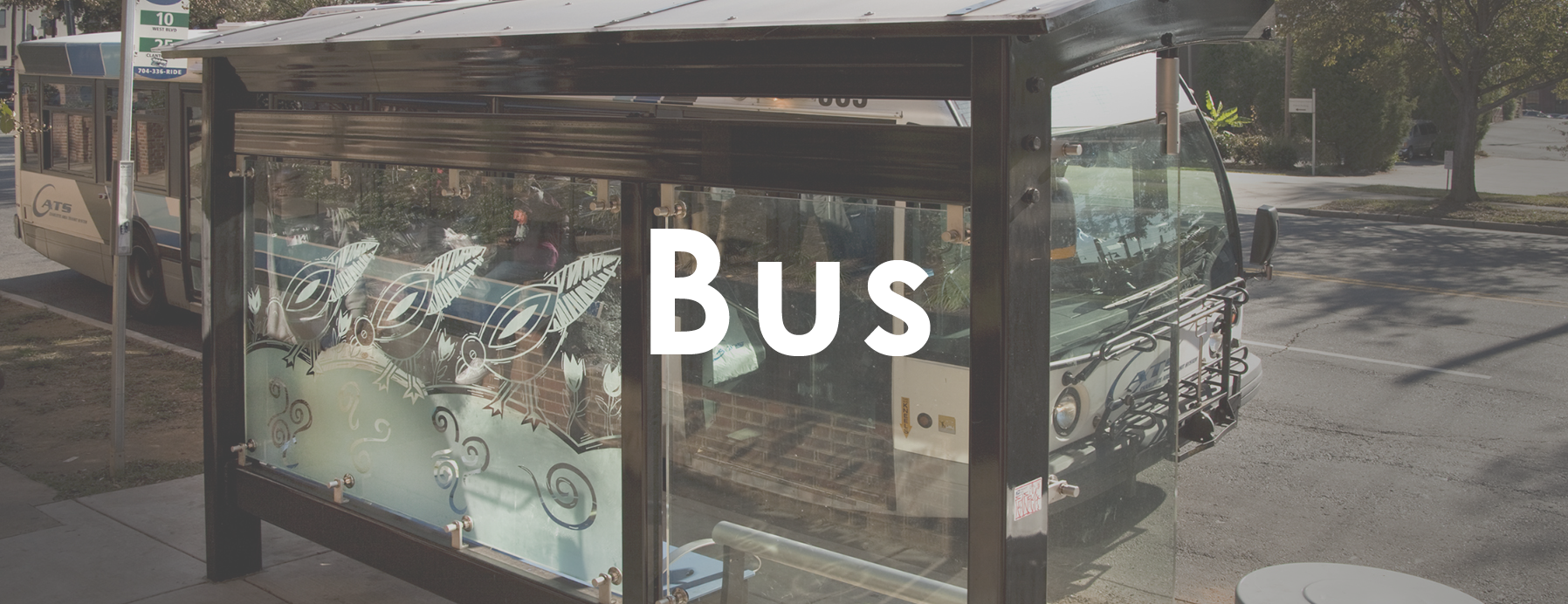
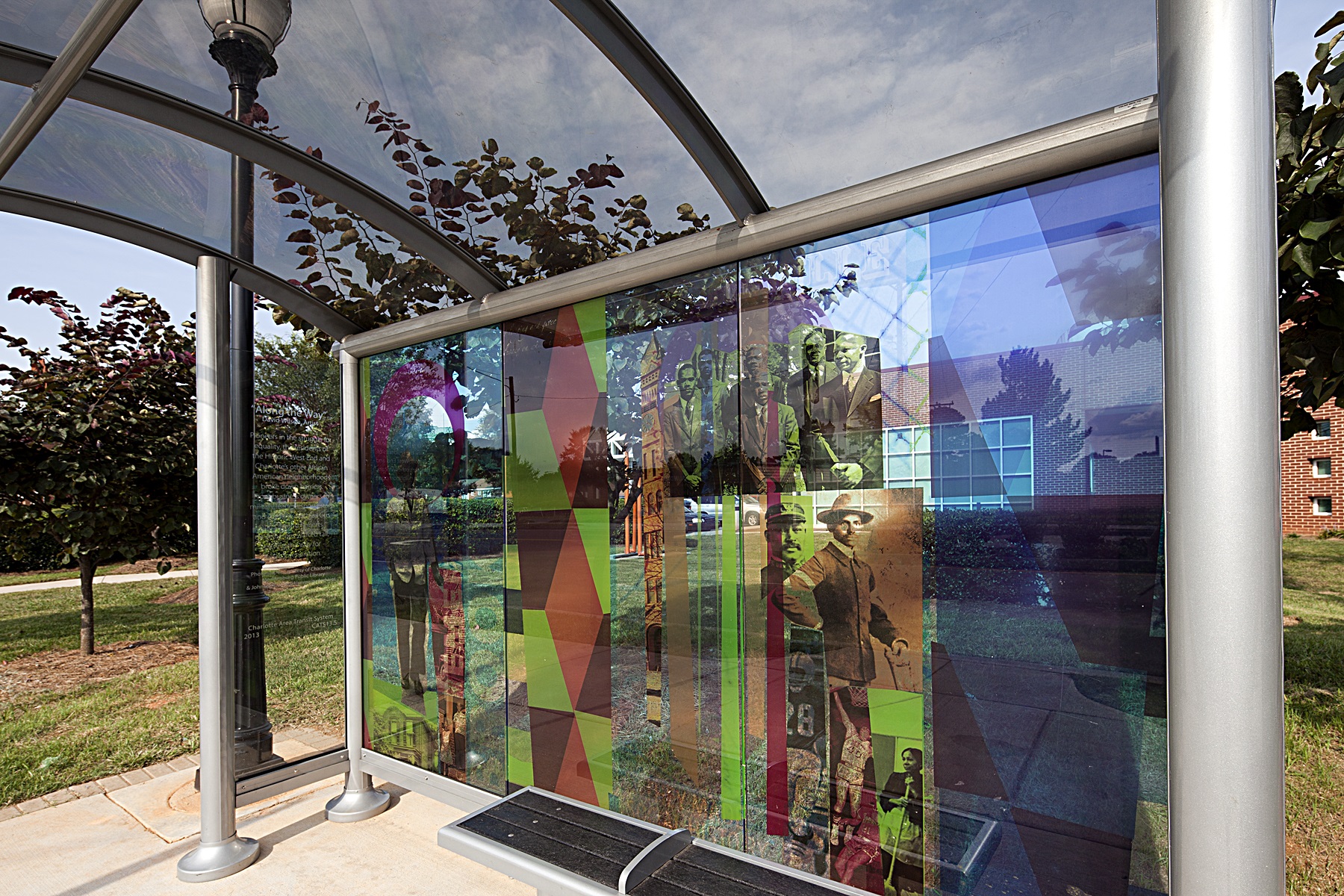
Beatties Ford Road
David Wilson, Along the Way
2013
North Carolina artist David Wilson designed the collage art in the glass windscreens in six bus shelters along Beatties Ford Road between I-485 and LaSalle Street. The artist visited the project site and met with members of the Historic West End community to research ideas relevant to the local neighborhoods. He also visited Johnson C. Smith University to meet with faculty and students to learn about the University’s impact on the community. Wilson gathered images, documents, and text pertaining to the community’s past and configured them within colorful patterns of his own design to turn CATS bus shelters into jewel boxes honoring the West End Community’s past. In the side panels of each shelter, the artist’s statements chronicle the memories and mention the notable figures honored by his art.
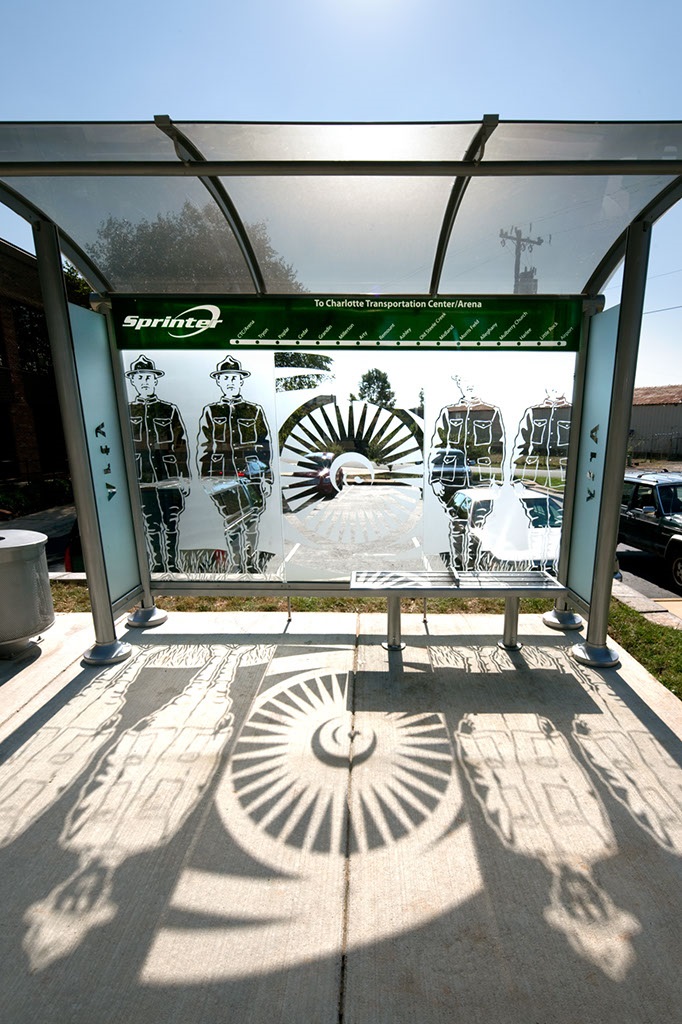
Sprinter Enhanced Bus Service
Michele Tejoula Turner, On the Move
2010
Twenty-six bus shelters serve the Sprinter line from the Charlotte Transportation Center in Uptown to the Charlotte Douglas International Airport. Each bus shelter features etched glass windscreens designed by local artist Tejuola Turner. Her imagery is informed by the local history and community input received at several neighborhood meetings conducted by CATS. Turner’s art references historic sites such as Camp Greene, a United States Army training camp from 1917-1919. Her image of a “dough boy” soldier from a 1918 picture postcard is depicted at the Arty stop. While other locations, such as the Ashley stop, capture more recent history, including a popular drive-in eatery built in the 1940’s and an ice-cream establishment from the 1950’s. Turner’s art at the Midland stop is intended to honor industrial workers who were employed at textile mills in Charlotte.
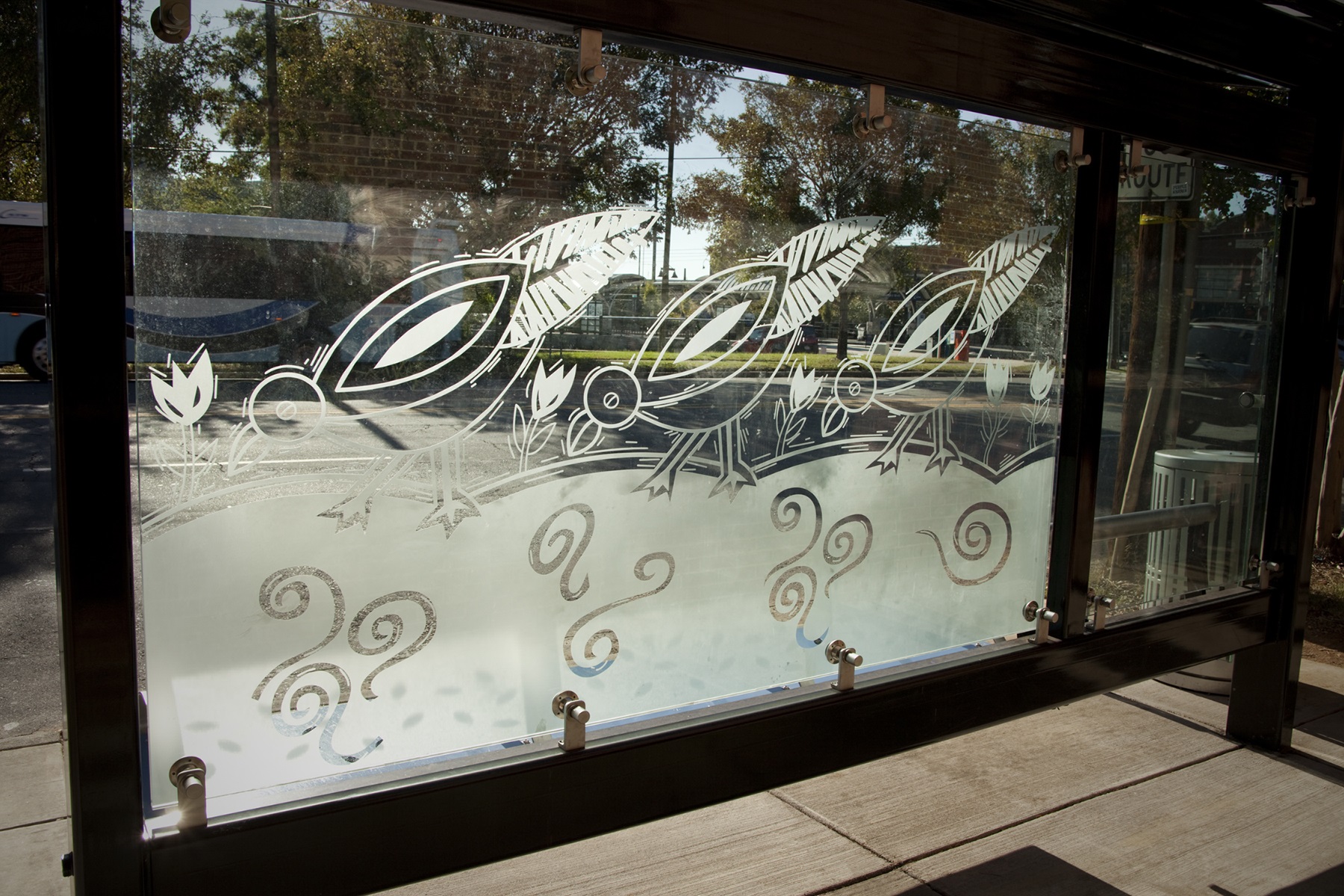
East/West Boulevard Passenger Shelters
Michele Tejuola Turner, Hungry Birds
2009
Turner’s two illustrations of hungry birds searching for food in springtime are larger than life and etched into the glass windscreens of the passenger shelters. In contrast, the artist’s smaller leaf cutouts make up the surface of the blue metal shelter benches. Both designs befit the natural environment preserved in the South End community.
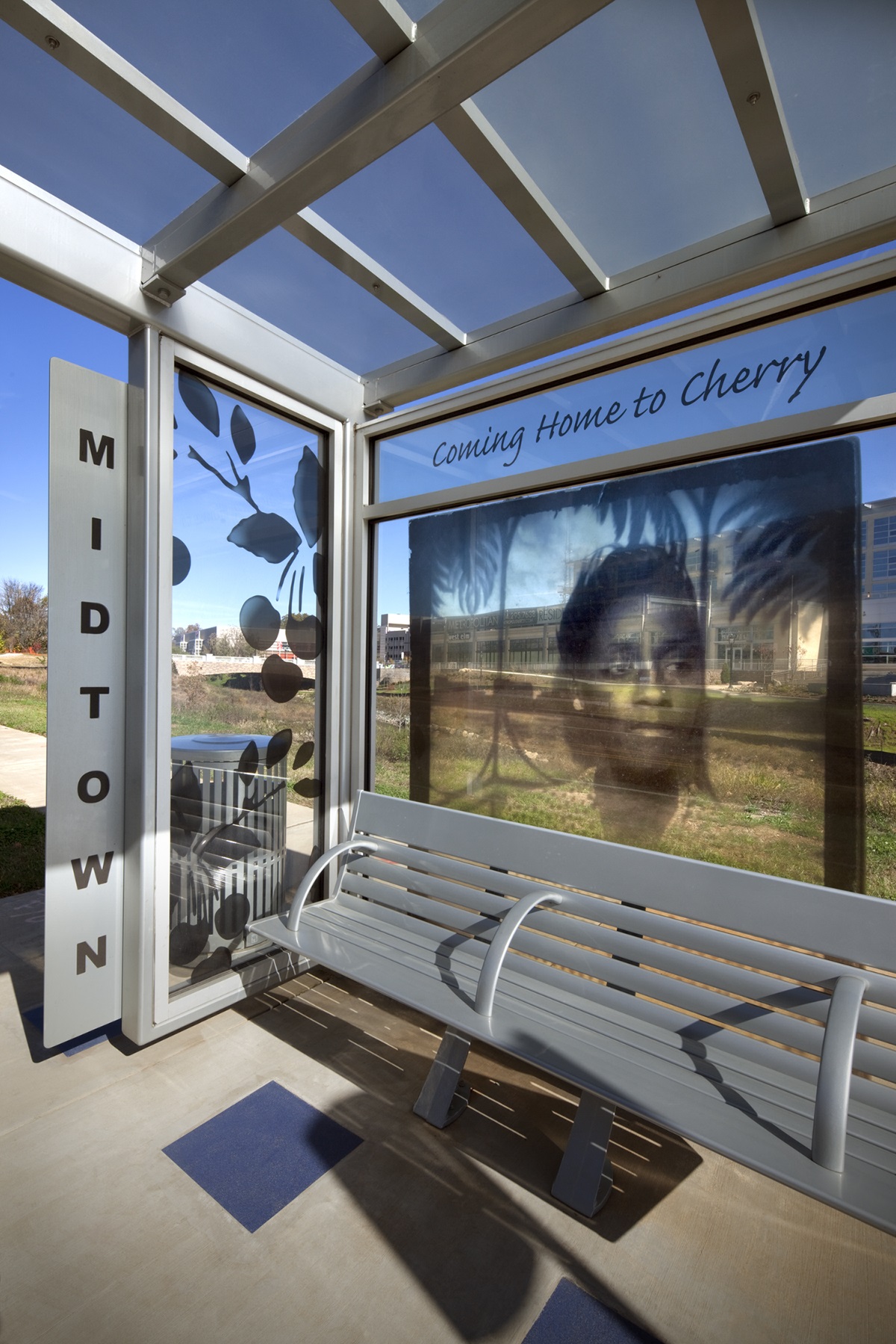
Midtown Passenger Shelters
Susan Harbage Page, Coming Home to Cherry
2008
Strong family ties shared by long-time Cherry residents and a scarcity of historical imagery inspired Coming Home To Cherry, a series of portraits on five passenger shelters in Midtown, a mixed-use development adjacent to one of Charlotte’s oldest surviving African-American neighborhoods. Susan Harbage Page, working with the Cherry Community Center, collected images from neighborhood residents to rebuild the community archives and integrate art into the shelters. Portraits of current and former Cherry residents represent family, community, and education. The cherry design by the artist refers to the original wild cherry trees for which the neighborhood was named. Four blue tiles integrated into the concrete reference the traditional use of blue as a protective color, often seen over doorways in older African and African American homes.
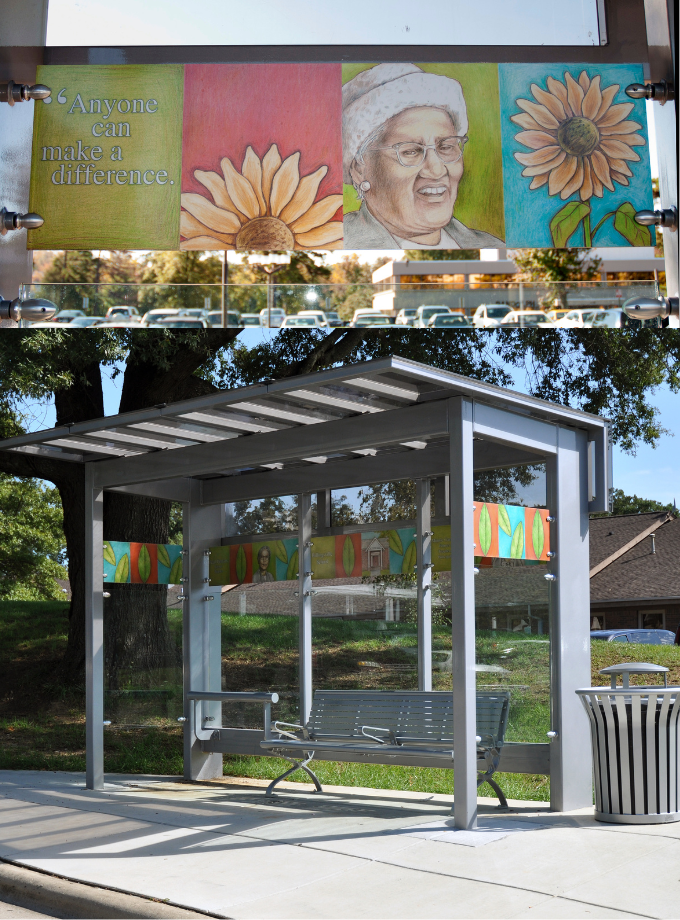
Randolph Billingsley Passenger Shelter
Michele Tejuola Turner, Grier Heights - The Early Years
2011
Local artist, Michele Tejuola Turner drew inspiration for her art from a meeting at the Grier Heights Community Center. At this meeting she discovered a series of photographs of influential early residents, and she chose to honor them in these shelters. Arthur Grier is honored for developing the African American suburban area known as Grier Heights and is remembered as one of Mecklenburg County’s most successful African American businessmen during the era of segregation. In another shelter, Naomi Drenan is heralded as the “Mama of Grier Heights” for her community efforts. Samuel Billings was the first black landowner in the area, who donated land for the original Billingsville School in 1927 which now houses the community center. Minnie Gamble and Pearl Dinkins are also remembered as an influential principal and teacher in the school’s early years.